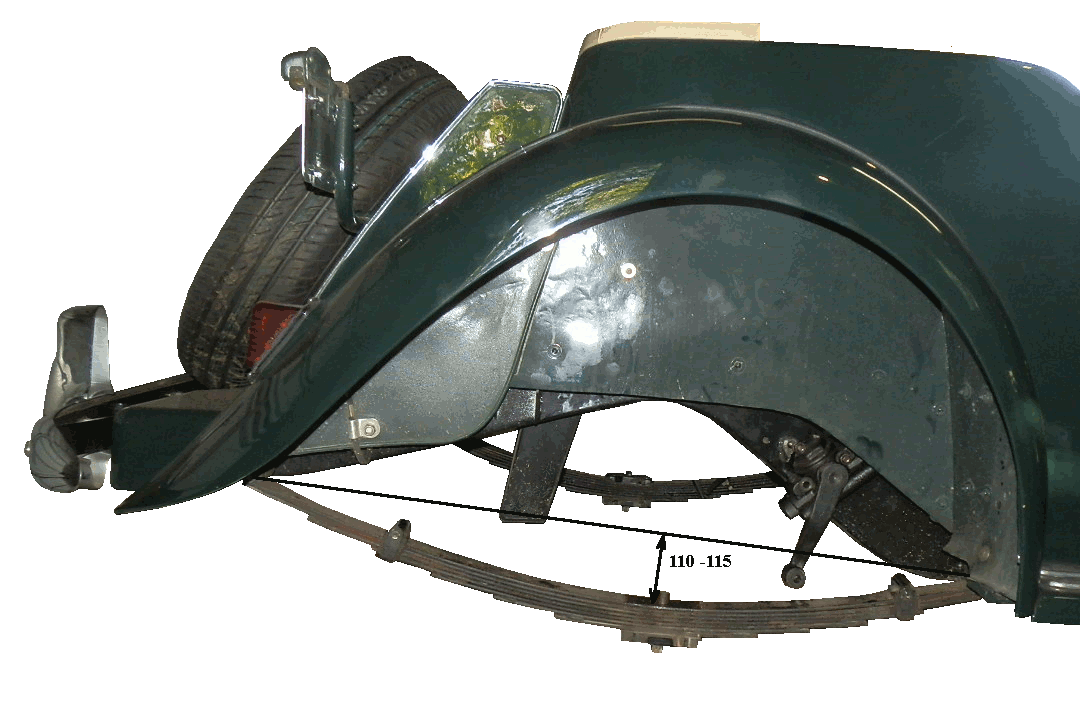Well this is pretty circumstantial; what else could I do to give confidence in my measurement? I wasn't about to take the springs out again to remeasure them, so I did my best to measure the camber now the car is almost completely assembled. As close as I could measure, the camber, measured from the centre of the spring to the top of the socket, was now 8.0 cm, or a deflection of 2.4 cm when carrying the weight of the car. The manual says the weight of the car, unladen, is 2072 lb. Now, I don't know how the weight is distributed, and I can't infer it from any of the spring data given: I would suggest most of the weight would be over the front wheels, so say 1200 lb over the front wheels and about 800 lb over the rear, or say 400 lb on each rear spring. So 400 lb led to a deflection of 2.4 cm. My 140 lb placed over one wheel gave an additional deflection of 1.2 cm, so assuming constant spring rate and working backwards, measurement a should have been 8 + (1.2/140)*400 = 11.4 cm. Pretty close, I think.
So what advice would I give now about setting the springs? Given all the uncertainty in my measurement, especially in the laden measurement, and the uncertainty from the specifications, I would measure from the centre of the curl. At worst, the car would be 1.5 cm too high, or 1.5 cm too low, and it might be just right!


Well, much later, being embarrassed by my cavalier response, I took out the back axle so that I could better measure and report the camber. (Actually, of course, I didn't take it out for that reason, but to investigate and correct a problem with rear wheel bearings caused by lack of axle oil due to a leaking pinion flange oil seal - it was losing about 1 ml per km!) Anyway, while it was out I did measure the camber. As shown in the photo, it was about 100 - 115 mm measured from the centre of the shackle pin to the centre of the front pin - that is, measurement b above.